A Sampling of Sample Processors
During the development of most any given processor many chips are produced before it is released for commercial use. These pre-production chips serve a wide variety of purposes in the design and debugging of the processor to ensure that the final CPU work well, sells well, and is compatible with all the vendors parts (motherboards, cooling solutions, power supplies, etc). These chips are generally referred to as samples, and there is several types of them. We’ll use Intel/AMD as the main examples but most all processor companies work in similar ways.
When a processor design is first being developed, the package for it is also often being developed as well, what will the new processors silicon die reside in? How many pins? How will it dissipate heat? This type of testing is often handled with Mechanical Samples. Mechanical Samples are exactly as they sound, they test the mechanical aspects of the processor, the physical fit of it. THese are often sent to board/socket manufacturers to ensure the processor will fit in sockets/boards, and with the automated equipment used to build systems. Cooling solution companies may also receive these to test how a heatsink fits on the CPU. Mechanical samples may not contain a die at all, or may be chips that were tested as bad, or simply just untested chips (Intel used a lot of untested Mechanical Samples in their educational kits).
The next samples typically made are Electrical/Thermal Samples. These again do not have an actually processor die in them, but electrically do work. Electrical/Thermal samples are used to test the power draw and heat dissipation of a processor. They often use a daisy chain transistor design, which serves to draw/dissipate power. If a processor is expected to dissipate 135W of heat, a Thermal sample can be made to draw/dissipate exactly that. These can test the the power supplies on motherboards, as well as the heat dissipation abilities of cooling solutions. Some Thermal Samples have a temperature sensor added directly to the package to help see what temps they achieve. Electrical Samples and Thermal Samples could also be used as purely Mechanical Samples too, and this is sometimes seen marked on the sample.
The first samples made that actually contain a functioning processor die are Engineering Samples. Engineering Samples (also known as ES) are the most well known samples. Overclockers often like to find ES CPUs as they will often allow for easier overclocking due to some not having locked in speed (multiplier locked). Engineering Sample CPUs themselves come in several types as well. Usually the first run is known as ES1, these can be thought of as an ‘Alpha’ version. They are very likely to be buggy, and rarely run at the same speed as a production chip would. These exist to test the overall processor design, or some subset of it. Some are made to test just one part of the CPU, for example , the memory controller, or the cache. Later versions of
Engineering Samples are often called ‘ES2.’ These processors are getting closer to final production and are a lot less buggy, these would be considered ‘Beta’ Samples. Most of the time these are quite usable chips, and often are very similar in clock speed/features to a production processor. Intel denoted these chips with a Q-spec (such as QBGC) rather then production processor having an S-spec (such as SL5G8). AMD typically uses part numbers starting with ‘1’ for ES1 CPUs and ‘2’ for ES2 CPUs. (such as Opterons 1S160805L4BGC or 2S16….). Other companies have similar methodologies. Motorola (Freescale) used the PPC prefix for most ES CPUs and Texas Instruments uses ‘TMP’ (not to be confused with Toshiba who also uses the TMP pre-fix, but for processors in general). Once a company is fairly confident a design is ready for release one final version is made.
These are known as Qualification Samples (QS). QS processors almost always have a one to one equivalence with a production part, since that is their purpose, to make sure the design is ready for release. These processors are by far the most widely made chips, as they are shipped by
the thousands to vendors, system builders/integrations, and even the media outlets for review. The hope is that nothing major wrong is found with them, and that any bugs that are found can be dealt with in software or firmware, not requiring an entire silicon fix. Intel continues to use Q-specs for these as well, leading to some confusion with the previously mentioned ES CPU’s. AMD usually uses part numbers beginning with ‘Z’ for QS CPU’s and like Intel, does not offer these CPU’s for sale to the general public, they are either given to vendors, or sold exclusively to them for testing. Motorola uses XC, or XPC for these, and unlike AMD/Intel, mass produces these and sells them, often for years, before they decide that a part/design is truly fully qualified/characterized (in which case the prefixe is changed to MC. or MPC). Texas Instruments uses the ‘TMX” prefix for their Qual. Samples. and tended to make/sell them like Motorola did with theirs, changing the prefix to TMS for fully qualified production parts.
All samples are sought after for collections, due to their part in the development of a design, and their rather rarity compared to production parts. There is however one type of sample that is desirable not just due to its rarity, but due to its looks. These are known as Marketing Samples, and have largely faded away unfortunately. Marketing Samples are just as they sound, a chip used to help market/sell the processor. These are more often then not, unworking chips, similar to Mechanical Samples, but are made to look nice, usually having a large logo on them, or other flashy design. These were often given to vendors/sale people as gifts, or as swag (freebies) at events like the Consumer Electronics Show, or other industry gatherings. Come by a companies booth and they would give you a nice pretty Marketing Sample to remember them by.
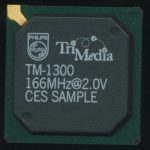
Philips TriMedia TM-1300 CES SAMPLE – These were made specifically to be handed out at the Consumer Electronics Show (CES)
On occasion a company may make samples for other specific reasons, such as testing a very certain part of the CPU, or a motherboard. Companies also have been known to make samples available for their employees, these can be normal parts, mismarked, or otherwise not perfect CPU’s and are generally marked ‘Employee Sample – Not For Sale.’ In the 1970’s and 80’s Intel often marked chips given to potential clients as ‘CS’ for Customer Sample. These were typically ordinary chips, or chips with cosmetic issues (for example a chipped corner). They were given out free (or in kits) for people to learn about Intel’s products. Confusingly,. Intel also used a 2 letter code for die run information on chips, so just because a chip is marked ‘CS’ (or ‘ES’ in the case of Pentiums and 486s later), does not mean that it is a sample.
For many years the sale of samples of all types was somewhat restricted, with listings being pulled from sites like eBay as companies such as Intel claimed that the processors were their property, and could not be sold after being given away. In an interesting twist, this was similar to record companies claiming the promotional CDs given to radio stations and the like could not be sold, and it was this that resulted in a U.S. Federal Court case in 2008
called Universal Music Group v. Augusto. In 2011 the 9th Circuit court ruled that such promotional CD’s were in fact able to be sold affirming what is know as ‘first sale doctrine.’ This case about music CD’s, ironically, affected sales of sample CPU’s as well, and they can now be bought/sold/traded freely without legal ramifications (though if a company sells something that is, for example, under an NDA (Non-Disclosure Agreement) there could of course be problems).
Samples show an interesting part of the development of the processors we use every day, and sometimes show designs that were tried but never made it to market, either because they didn’t work out, or management decided to take a different path (perhap the most frustration thing to happen in the life of a processor engineer).


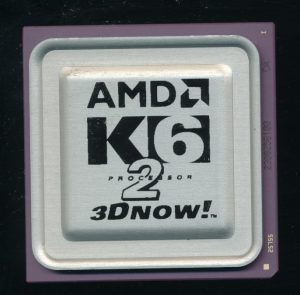
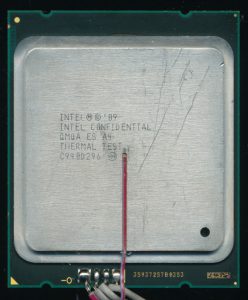
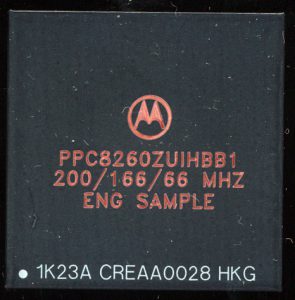
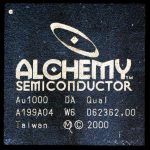
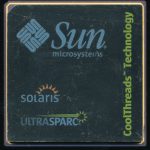
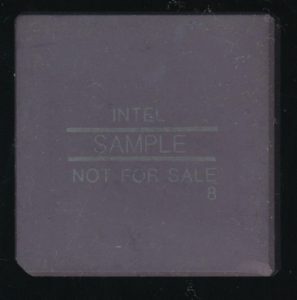
November 22nd, 2018 at 2:21 pm
Same goes for Intel “Confidential” chips (and probe boards!)
Intel had a contract with the initial recipient, but Intel has no agreement with subsequent owners and has no call on those products once they have left the initial recipient — although they may have a gripe with that recipient.
March 12th, 2019 at 5:27 pm
I came across an i5 3450 marked as OC3Z ES, EMPLOYEE BETA SAMPLE. I’ve seen the ES in the past but not with the EMPLOYEE BETA SAMPLE. Any help or idea of what I have? Thanks Ken
March 12th, 2019 at 5:31 pm
These were Qualification Samples given to employees, usually more as a gift then for thorough testing.
The idea was for employees to keep them, and not sell them, thus being marked as such for traceability